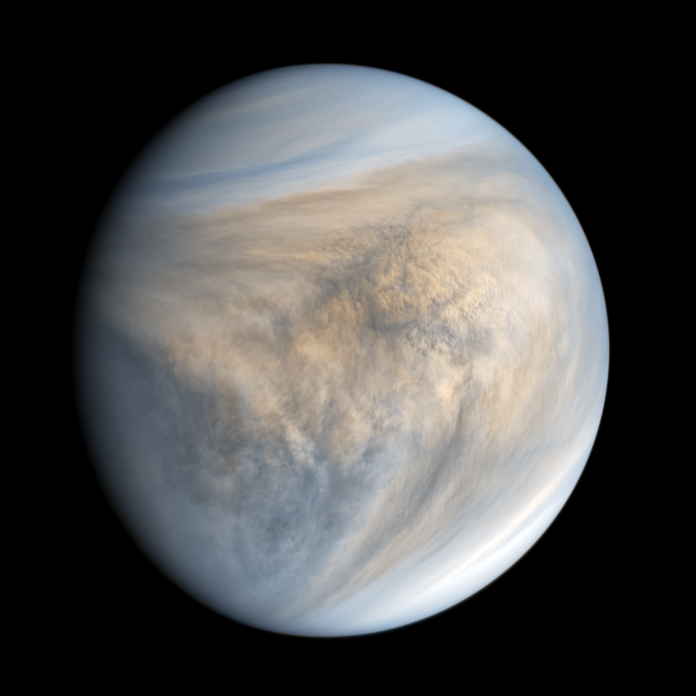In the quest to understand life beyond Earth, Venus has long been an enigma. Despite its inhospitable surface conditions, this “sister planet” of Earth may have once enjoyed a more temperate climate—and perhaps even harboured life. Now, a team of researchers has developed a groundbreaking equation that could help us determine the probability that life ever arose on Venus, and what that might reveal about the potential for life on other rocky exoplanets.
Exploring Venus: More Than Just a Fiery Hellscape
For decades, Venus has been synonymous with extreme temperatures and a runaway greenhouse effect. Yet, evidence suggests that billions of years ago the planet may have possessed liquid water and a more temperate environment. These tantalising hints have led scientists to wonder whether life could have emerged during that early, more habitable phase. “Venus and Earth share many fundamental similarities in size, composition and their position in the habitable zone,” explains lead researcher Diana Gentry, Director of Ames’s Aerobiology Laboratory at NASA’s Ames Research Center. “Understanding Venus’s past could offer crucial insights into why Earth remains alive and thriving while our sister planet became a cautionary tale.”
Introducing the Venus Life Equation
Inspired by the famous Drake Equation—which estimates the number of communicative civilizations in our galaxy—the new Venus Life Equation (VLE) provides a framework for assessing the likelihood that life once existed on Venus. The equation is elegantly simple:
L = O x R x C
Where:
- O (Origination) measures the chance that life originated on Venus, either via abiogenesis or through panspermia.
- R (Robustness) reflects the potential size, diversity, and resilience of any biosphere that might have developed.
- C (Continuity) accounts for the persistence of life-supporting conditions over time.
READ MORE: Native Australian Fungi and Bacteria Offer New Hope in Battle Against Fall Armyworm
“The VLE isn’t about providing exact numbers,” says Gentry. “It’s a scaffold—a way of organising our uncertainties and guiding future research through observation, experimentation and modelling.”
Key Parameters: Origination, Robustness, and Continuity
Origination (O):
This factor assesses the probability that life began on Venus before its climate underwent drastic changes. Whether life started through chemical reactions on the planet’s surface or was seeded via interplanetary transfer, O is considered a binary parameter—either life originated (1) or it did not (0).
Robustness (R):
Robustness measures the potential for any nascent biosphere to flourish and diversify. In the early history of Venus, when water was abundant and land-water interfaces existed, conditions may have been ripe for a vibrant microbial community. However, as the planet’s water evaporated and its surface transformed, the robustness of any emerging life would have been severely tested.
Continuity (C):
Continuity captures the likelihood that life-sustaining conditions persisted long enough for life to evolve and leave a lasting imprint. On Earth, continuous recycling of nutrients and stable environmental conditions have allowed life to survive multiple mass extinction events. For Venus, the challenge has been its dramatic atmospheric evolution, making C a critical—and highly uncertain—parameter.
Implications for Exoplanet Research
Beyond Venus, the VLE has far-reaching implications. As astronomers discover rocky planets in the habitable zones around distant stars, the VLE framework can be adapted to assess their potential for hosting life. “If we can understand why life took hold on Earth—and why it may or may not have on Venus—we can refine our search for life on exoplanets,” explains Gentry. By providing a comparative tool, the VLE helps contextualise our solitary example of life on Earth (the n=1 problem) against a backdrop of diverse planetary environments.
Challenges and the Road Ahead
Like any theoretical model, the Venus Life Equation comes with its own set of challenges. The inherent uncertainties in estimating each parameter mean that the VLE serves more as a conceptual guide than a definitive measure. Critics note that with only Earth as our example, there is a significant “n=1” limitation that makes precise quantification difficult. Nonetheless, Gentry and her colleagues are optimistic that as more observational data from missions such as ESA’s Euclid telescope and future Venus probes become available, these parameters can be refined.
“We’re standing on the brink of a potential paradigm shift,” says Gentry. “Even if the numbers are rough estimates, the VLE forces us to confront the big questions about life’s origins and its persistence under changing conditions.”
A Catalyst for Future Exploration
The introduction of the VLE marks a bold step forward in planetary science. As researchers continue to probe Venus’s past—seeking clues from its geological history, atmospheric composition, and potential remnants of water—they are piecing together a more complete picture of what might have been. In doing so, they not only address the mystery of Venus but also refine the tools we need to evaluate the habitability of countless exoplanets.
“This equation is just the beginning,” Gentry concludes. “It’s a call to the scientific community to dig deeper into these fundamental questions. Understanding Venus’s past might ultimately help us answer one of humanity’s most profound questions: Are we alone in the universe?”
With the promise of new data and advanced modelling techniques on the horizon, the quest to determine whether life ever existed on Venus—and what that means for life elsewhere—continues to inspire and challenge scientists around the globe.
